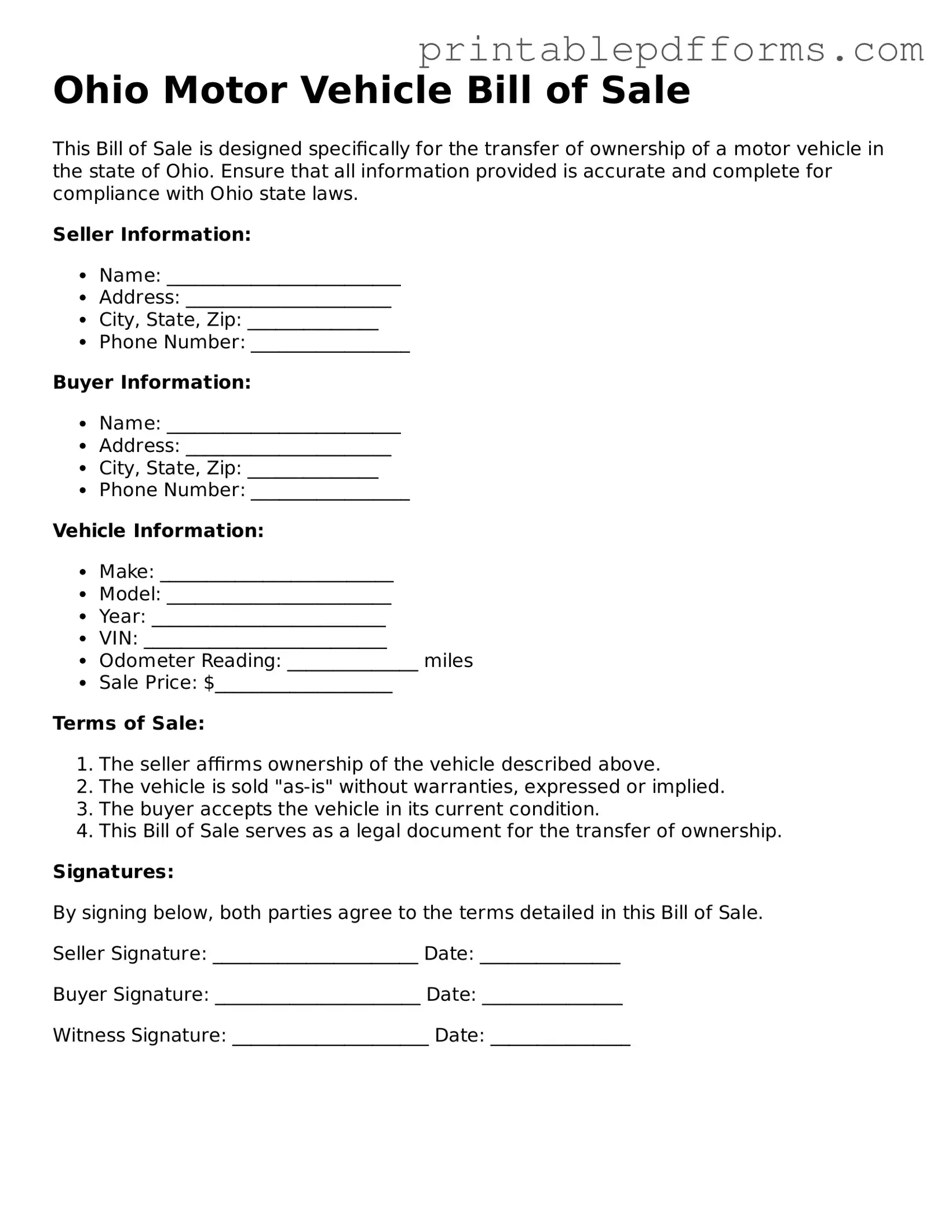Ohio Motor Vehicle Bill of Sale
This Bill of Sale is designed specifically for the transfer of ownership of a motor vehicle in the state of Ohio. Ensure that all information provided is accurate and complete for compliance with Ohio state laws.
Seller Information:
- Name: _________________________
- Address: ______________________
- City, State, Zip: ______________
- Phone Number: _________________
Buyer Information:
- Name: _________________________
- Address: ______________________
- City, State, Zip: ______________
- Phone Number: _________________
Vehicle Information:
- Make: _________________________
- Model: ________________________
- Year: _________________________
- VIN: __________________________
- Odometer Reading: ______________ miles
- Sale Price: $___________________
Terms of Sale:
- The seller affirms ownership of the vehicle described above.
- The vehicle is sold "as-is" without warranties, expressed or implied.
- The buyer accepts the vehicle in its current condition.
- This Bill of Sale serves as a legal document for the transfer of ownership.
Signatures:
By signing below, both parties agree to the terms detailed in this Bill of Sale.
Seller Signature: ______________________ Date: _______________
Buyer Signature: ______________________ Date: _______________
Witness Signature: _____________________ Date: _______________
